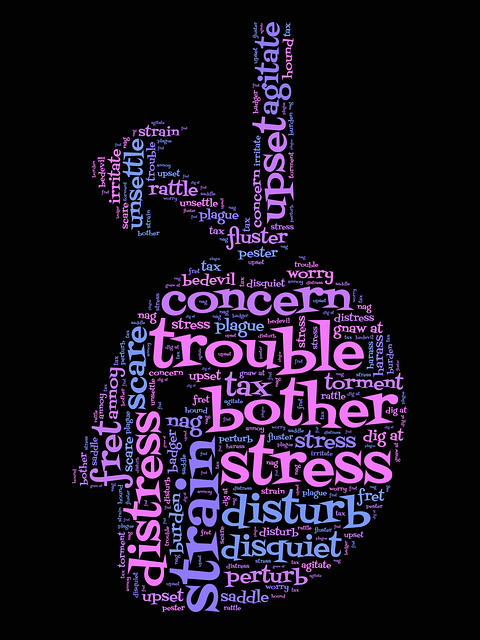Posts Tagged ‘chiropractor’
How to get Moving
Think about what you put your spine through on a daily basis: the twists, the turns, the bends and dips and, those dreaded lifts. These are all putting pressures on the muscles and vertebrae in your back that can lead to misalignment and pain, but the most insidious of all might be not moving at all. Sitting is becoming epidemic in America, and spines are suffering.
Your spine on sitting:
- Muscles atrophying due to lack of movement
- Spinal discs absorbing fluid and tightening
- Range of motion restricting
- Circulation stagnating
- Pain accumulating
The modern office is a fear-inducing place for the modern spine. The body needs to move; it yearns to move. But hours and weeks and, ultimately, years of sitting in the office train the muscles into a state of tightness that can only be detrimental to your overall well-being. At Holmes Chiropractic, we want to help you rediscover the joy of movement and how good it makes your body feel. From a simple walk to a jog or swim, the activities can be fun and uplift your mood while simultaneously refreshing your body.
We promise to help you return strength to underutilized muscles and treat the structures and tissues of your back which may be damaged from years of misuse. Call our office in Houston to schedule an appointment today.
Dr. Randall Holmes, D.C.
Driving Posture
Does your car seat offer you any support? If not, what steps are you taking to maintain a healthy resting position while commuting? These may sound like tough questions when you commute for only thirty minutes a day, but the minutes add up, especially for your spine. Car seats are rarely engineered to encourage a neutral resting position, so the onus is often upon us to ensure that our backs remain upright rather than slouched in our seats.
Here are some postural tips:
1. Avoid leaning to one side: this is more common than you might think. Drivers often find themselves leaning on the center console which introduces a slight but significant imbalance to the back. Over hours and hours, this imbalance can compound to cause pain.
2. Hips straight, face straight. Keep your chin level and your head balanced over your spine to prevent the weight of the head from causing excess pressure to the cervical vertebrae.
3. As time creeps on, don’t let your shoulders tense. This is something that happens no matter what the activity. Be cognizant of muscles in the neck and shoulders tightening, because this is symptomatic of the entire back. If you need to, pull over and stretch. It may sound silly, but it can save you from being stiff at the end of the drive.
4. Hands at 9 and 3
If you commute to make your living, driving posture should be high on your list of health priorities. At Holmes Chiropractic, we help people see the problem areas in their lifestyle and how it is contributing to their back pain. For an assessment that takes into account your particular back pain and how it relates to your lifestyle, call our office at (713) 862-2440.
Dr. Randall Holmes, D.C.
Cervicogenic Headache
Cervicogenic headaches are among the most unusual headaches because the pain is not originating in the head. This happens to make them the hardest to diagnose. But for people who have experienced trauma to the neck, back or head at any point in their lifetime, cervicogenic headaches are worth considering as a root cause if you suffer from chronic headaches.
How it works:
Whether because of trauma, repetitive stress or poor posture, nerves in the neck are impinged due to misalignment of the spine. These nerves are sending signals which travel up the spinal cord and merge with nerves in the brain. When the pain is manifest from nerves in the brain rather than the neck, a headache is the logical outcome. The idea that pain can manifest in a place different from where it originates is called reference: nerves in the neck are referring pain to nerves in the brain. Cervicogenic headaches are often misdiagnosed unless the neck is examined for misalignment. There are also over 20 muscles in the upper back and cervical region that can refer pain to the head if they are tightened or strained.
Regardless of where headaches begin and end, it is important to approach them with the right attitude: headaches are not just a part of life. They are a clear signal that something is wrong, that a dysfunction exists within your body. Diet, exercise and nutrition are great ways to manage your symptoms, but sometimes it takes a little more research and treatment. That is where we come in: call our office in Houston at (713) 862-2440 to schedule an appointment today.
Dr. Randall Holmes, D.C.
Headaches and Sleeping
For many people, getting to sleep, or staying asleep is difficult because of headaches and, by the opposite token, lack of sleep creates headaches during the day time. Sleep is a key ingredient to overall wellness, and as such, the pursuit of restful, restorative sleep is a primary pursuit at Holmes Chiropractic. How can you begin to function for a day when your restorative hours were racked by headache and stress? It sets a tone for your life that becomes hard to manage.
As we see it, nerves exiting from the cervical spine are involved in regulating the limbic system, which is responsible for mood. A nerve interference at this level could cause fluctuations in happiness, and lead to stress, anxiety and depression. Furthermore, a nerve that is being pressed by a misaligned vertebrae could be causing pain that is referring to your head. As muscle spasms begin to accrue in the shoulders and neck, the problem becomes muddled. It is not unbelievable that a cervical subluxation could be causing your headaches that stop you from sleeping. And it is proven that not sleeping causes headaches, whether from anxiety or exhaustion.
At our office in Houston, we believe that together we can make positive impacts on your sleep health. We take everything into consideration: sleep hygiene, nutrition, ergonomics and posture, as well as chiropractic considerations that treat the spine to ensure your nerves are functioning properly. Call our office to schedule an appointment today and start sleeping right to reduce headaches.
Dr. Randall Holmes, D.C.
Posture Headache
If someone were to take a picture of you right now, as you sat at the computer, how would you look? Would you be upright in your chair, with a healthy lordotic curve, shoulders back and face straight forward. Or would you be slumped forward, neck cricked downward, with tight shoulders and a rounded back? For many people, it is option two, and it’s not doing their head any favors. For people who come home from a grueling day at the office with a pounding headache, posture could be your downfall.
Here’s how it works: after hours of mental exertion, any awareness of posture has gone out the window. We have succumbed to the malaise of work and our muscles are now suffering. The chin starts moving toward the screen, as though by magnetization, and the head follows, rounding the back and scrunching shoulders in the process. Now the weight of your head, no longer at the top of a straight spine, is magnified, creating an imbalance that requires shoulder and neck muscles to compensate. This is how these muscles feel tight or strained. Often times, muscle spasms will accompany this position, and the pain is referred to the head, leaving you with a headache.
Clearly, this is not something you want to do to yourself. There are many intangible factors which create headaches. It is in all of our best interest to exercise the powers in our control to limit headache symptoms. Posture is one of the most effective, least used ways to influence your health: unlock its power by calling our office in Houston today at (713) 862-2440.
Dr. Randall Holmes, D.C.
Everyday Stress and Headaches
What is a regular, every-day headache? They are the headaches for which we quickly take aspirin in the hopes of muting the pain, allowing the causative condition to linger. They are insidious and multi-faceted: perhaps you did not drink enough water today? Or not enough food. Too much computer time could have done it, but it is also allergy season. We write them off as being just part of life; a manifestation of internal and external factors that cannot really be helped. If we are willing to accept this, could it be so far fetched that a misalignment in the spine is to blame?
At Holmes Chiropractic, we believe in finding the root cause rather than treating the surface symptom. Modern lives leave us at the mercy of myriad stressors, and our bodies naturally tighten in a protective response. Unfortunately, this tightening becomes chronic and prolonged periods of tightness will leave muscles strained and vertebrae misaligned. We often see people whose shoulders and necks are in such a state of tension that it is no wonder pain is being referred up into the head.
We treat you with a holistic approach, addressing the headaches by relieving tension and misalignment in the cervical region. Massage releases endorphins that have natural stress and pain fighting properties. Do not let tension headaches hold on to your life any longer: call our office in Houston at (713) 862-2440 to see how we can turn daily headaches into a thing of the past.
Dr. Randall Holmes, D.C.
Sleeping with Good Form
If only sleeping was simple. In a globalized world where stress seems to grow by the day, sleep is becoming harder to come by: falling asleep and staying asleep are problems entirely of their own, but what is happening while you sleep? The position your body is in can determine whether you wake up feeling refreshed or refracted, rested and rewarded or wrinkled and restless. Today, a topic that is hard to control, but has large lasting ramifications on your body: sleep posture.
- Sleep posture is usually determined by what feels most comfortable: for back and side sleepers, this is OK, but for stomach sleepers this is unfortunate. Have you ever heard that sleeping on your stomach is bad for you? Unfortunately, it’s true. Besides making an impact on snoring and some sleep apnea cases, belly-down is no boon for healthy sleeping. As you sleep, the natural curve of the spine is flattening. If this is the only way you can fall asleep, put a pillow under your lower abdomen to fight the flattening effect.
- Back sleepers: This is the best position for your body to sleep as the back, neck and head remain in alignment. Sleep ergonomics come into play here however: sleeping with a pillow that cricks your neck up or down can leave you stiff and out of sorts in the morning and a bed that does not sag in the middle is important.
- Side sleepers: you are in the majority. This is the most comfortable position for people to fall asleep and wake up and it is not necessarily damaging. A downside of sleeping on the side is the amount of weight that is put on the shoulders and inferior arm. Believe it or not, the side you usually sleeps on has an impact on your health. For example, sleeping on the right side can contribute to heartburn while sleeping on the left side can put pressure on organs like the liver and lungs.
Sleeping is far from simple. But there are minor adjustments you can make to your sleep set up that will help you reap the most benefit out of your restive period. Call our office in Houston at 713-862-2440 to schedule an appointment.
Dr. Randall Holmes, D.C.
Sleep Apnea and Chiropractic
Sleep apnea (apnea meaning lack of breathing) is a common disorder characterized by shallow breath patterns and pauses during sleep. There is often an associated snort or choking sound that precipitates a resumption of normal breathing.
To the casual observer, it may appear as though someone suffering from sleep apnea is holding their breath, withholding oxygen intake until they finally have to gasp for air. From a chiropractic perspective, the presence of sleep apnea points to nerves that communicate with the diaphragm, the primary muscle involved in breathing. These nerves exit from the mid-cervical spine, and if a subluxation is allowed to press down on them, mechanical functioning of the diaphragm can be impeded. Sleep apnea sufferers often find improvements after chiropractic adjustment to this region.
Consider the anatomical picture of this condition: as you approach deep sleep, the brain sends signals to the muscles telling them to relax. The tissues surrounding the throat sag into your airways, restricting the amount of room for air to flow, meaning less oxygen in the blood. If your diaphragm is also malfunctioning, this will compound the problem by not allowing you to breathe sufficiently. Eventually your body produces an emergency response, the snort, which prevents you from fully relaxing unto deep sleep.
At Holmes Chiropractic, we believe that sleep apnea can be impacted positively through natural means as opposed to prescription medication. We focus on correcting subluxation in the spine, thereby improving the function of your chest muscles. All of our treatments will help your airways to acquire the proper amount of oxygen and nutrition they need to provide you with healthy, deep sleep.
Call our office in Houston at 713-862-2440 to schedule an appointment today.
Dr. Randall Holmes, D.C.
Restless Leg Syndrome
Restless Leg Syndrome (RLS) is a neurological disorder related to the nervous system, causing involuntary twitching or movement of one or both of the legs. It is also classified as a sleep disorder because the incessant movement interferes with the sufferer’s ability to sleep, leading to insomnia and elevated stress levels.
Symptoms of RLS are variable and specific to the individual but usually include at least one of the following:
- Aching to outright pain
- Tingling
- Numbness
- Burning/stinging/itching
It has also been described as a creepy-crawly type feeling. Regardless, of how you characterize it, RLS is downright unpleasant. Symptoms are often prevalent during the daytime but become most pronounced when a person lies prostrate, or tries to rest. Because it is a disorder of the nervous system, chiropractic is a particularly effective treatment.
Muscle twitching is caused by a nervous system signal, whereby motor neurons signal to a particular muscle to contract: muscle builders utilize this signaling to build muscle. Because nerves control this muscle movement, it makes sense that if your muscles are twitching involuntarily, it could be a nervous system malfunction.
We provide the following benefits to RLS sufferers:
- Chiropractic adjustment to normalize nerve functioning in the lumbo-sacral region, where nerves communicate to the legs.
- Exercises and stretches that support and balance the pelvic region.
- Focusing on establishing balance in the lower body.
Do not let structural causes be the reason for your RLS. Call our office in Houston at 713-862-2440 to schedule an appointment today.
Dr. Randall Holmes, D.C.
Restless Sleep
Successful sleep means falling and staying asleep and, while asleep, deriving the restorative benefits that sleep has to offer: a productive period of rest and recovery that boosts everything from physical and mental fitness to well-being and mood.
When we treat people who are suffering from sleep problems, it is easy to diagnose a systemic pattern of external and internal causatives that have led to their sleepless condition. So we begin with the basics: a conversation to determine what kind of life you lead and how it may impact your sleeping ability.
Here is a standard daily itinerary that precipitates a sleepless night:
- Wake up from a restless night with a stiff neck.
- Preparation for a busy day begins with coffee, your morning stimulant.
- Blaze through a day of work, balancing the ups and downs, exerting your brain and accumulating stress.
- Eating is a secondary consideration to work, so your body does not receive anything close to the full nutrition it needs.
- A couple of hours of television before bed keeps the brain buzzing and active.
- Falling asleep on an ill-fitting pillow, perpetuating the neck pain.
As you can see, restless sleep is viciously cyclical. If your life involves even one of the factors mentioned above, it could be perpetuating a pattern of sleeplessness that is harming your quality of life. If you are trapped in this cycle, do not despair: better sleep is possible.
From a chiropractic angle, the upper neck region is the most coalescent with the sleep center of the brain. Keeping this region free of subluxation allows the nervous system to contribute to a healthy night’s sleep. We offer lifestyle counseling to help you identify counterproductive activities and reduce stress.
Call our office in Houston at 713-862-2440 to schedule an appointment today.
Dr. Randall Holmes, D.C.






